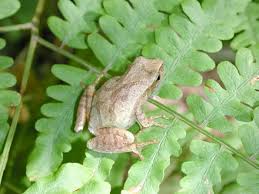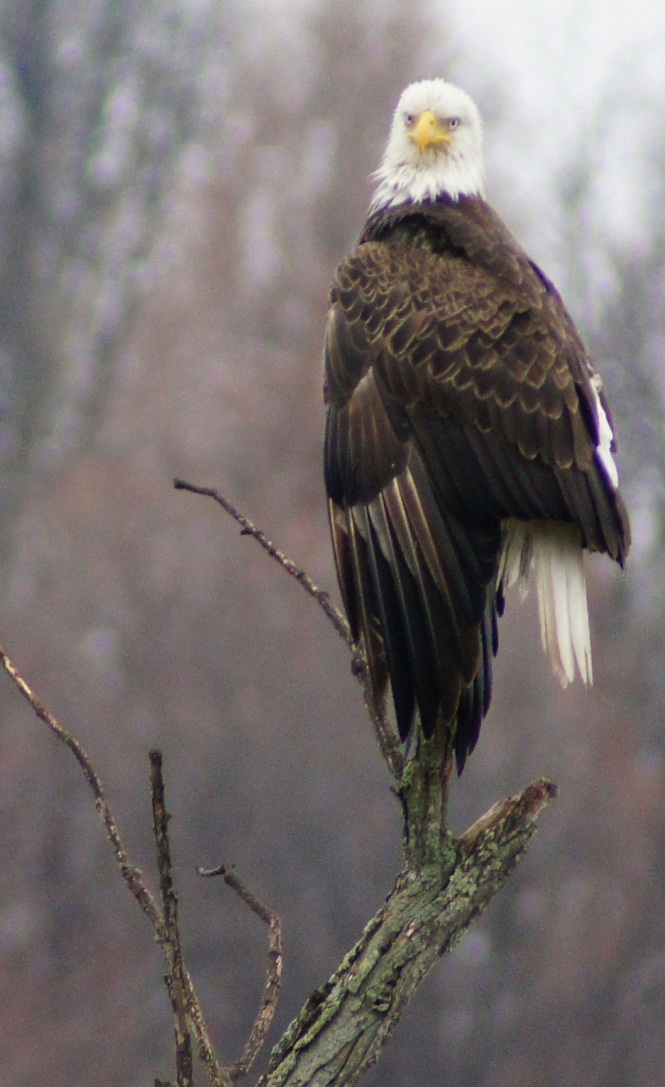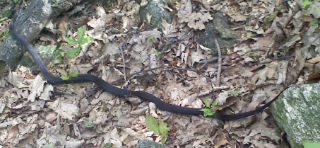Two snakes have been reported to Coventry Wildlife. One was seen while a resident of coventry lake was mowing their yard. This was a garter snake. The other snake was reported with a different story. A large black snake was reported when a local coon hound dog had it attached to its ear and the body of the snake was wrapped around the dog's neck! Picture that. Both snakes are non venomous. The black snake was about 4 feet long.
A unique look at the wildlife in the direct vicinity of North Coventry Pennsylvania. We encourage you to notify us of unique wildlife in our surrounding area. You may contact us at lauriek908@gmail.com
Friday, August 26, 2011
Thursday, August 18, 2011
Spiders abound!
Many spiders have been reported to Coventry wildlife the past week. Spiders love moist areas. Many times you will find them in your basement due to the increased moisture found there. You can often see many spiders and their eggs in the mulch around your house because mulch retains moisture. The most common type of spider in our area is called a wolf spider and they can be big.
Tuesday, August 2, 2011
Field mice in an umbrella!
A field mouse was seen in an umbrella at Coventry Lake this week. The mouse was under the umbrella at the top in the little pocket that allows the umbrella to open. In North America, breathing dust that has come in contact with mouse excrement has been linked to hantavirus which may lead to Hantavirus Pulmonary Syndrome (HPS). Mice are primarily nocturnal animals that rely on other senses outside of eyesight. Vision is not one of their best senses. The picture below is from google images as the mouse scared the homeowner.
Friday, July 29, 2011
Butterflies seen at Coventry Lake
Two different types of butterflies have been dominant this summer at Coventry Lake. The yellow swallow tail butterfly and the monarch butterfly have both been seen in great numbers. The swallow tail gets its name by the two small swallows on the rear of the wings. The monarch butterfly migrates a tremendous distance. They are the only butterfly that migrates north and south. Around the first week in August the butterfly will start to migrate south toward Mexico and make its way back here in the spring. The photos are courtesy of google images.
 |
| Monarch Butterfly |
 |
| Swallowtail butterfly |
Saturday, July 16, 2011
Got Eggs?
House finch eggs were seen in a patio fern this week. The eggs are much smaller than Robin eggs and are white in color. There are four potential house finches in this nest. The house finch is one of the most common birds to visit a back yard. The Male's forehead, bib and rump are red in color as the females are a dusky brown on their entire body. The house finch has been found in the most densely populated areas in the world including large cities such as Philadelphia and New York.
| Photo take by Rich Kolka |
Tuesday, July 12, 2011
Rabid Animals Seen During Summer Time
There have been reports of a few rabid animals during this summer. One was a raccoon seen at Marsh Creek State Park and the other was a rabid cat seen at Coventry Lake. How can you tell if an animal has Rabies? First if any animal is overly friendly or does not scatter when you approach it, that could be a sign. The most obvious sign is if an animal such as a raccoon who is nocturnal is seen during the day light hours. This would most certainly mean a rabid animal. The picture below is courtesy of google images.
Friday, July 1, 2011
Tree frogs seen at Coventry Lake
A gray tree frog was seen at Coventry Lake this week. The frog was stuck to a sliding glass door and when the door was opened the frog jumped directly onto the person leaving the door! It was awesome! The frog stood still long enough to have its picture taken. The gray tree frog's scientific name is Hyla chrysoscelis. It has a cream colored ventral or belly surface and its back or dorsal surface can range from gray to light green. They are abundant in PA.
| Photo taken by Rich Kolka |
Monday, June 27, 2011
Mink spotted along 724!
Numerous Minks have been spotted and reported by wildlife expert and avid hunter Barry Dawson. Along route 724 heading toward reading is where the Mink was spotted. The mink spends a lot of time in the water hunting for food. It is a mammal that has waterproofing oil glands that will cover its fur. The mink can dive up to 16 feet to capture its food which consists of snakes, birds, muskrats, rabbits, mice and chipmunks. Although they may look cute, stay back! They have an awful smell similar to a skunk but unlike the skunk, they cannot aim their spray. The picture below is courtesy of google images.
Monday, June 20, 2011
Spring Mating Season for Toads
Springtime is mating time for many different species of animals. On Father's day this past Sunday a number of tiny toads and frogs were seen at Coventry Lake. The toad in this picture was taken by Laurie Kolka in the hands of Rich Kolka. The toad instantaneously urinated as that is one of its defense mechanisms. Toads differ from frogs by being able to live further from water and they have drier skin.
Tuesday, June 14, 2011
Barn Swallows seen at Hopewell
The Barn Swallow is a bird that has a unique type of nest. It makes its nest out of mud and anything else it can find. It will place the next in structures such as barns, bridges and garages. Barn swallows will often follow mowers or tractors to eat the flushed out insects in mid-air! These birds are easily identified by their iridescent blue head. They are very fast fliers. The picture is courtesy of Google images.
Wednesday, June 8, 2011
Den of Foxes seen near Schuylkill River!
A Den of Foxes was spotted last week along the Schuylkill River. She reports seeing six kits in the nest. This post contains the Google Earth image of where the Foxes were seen. This was sent by Kristen Weir who is an avid cyclist and outdoors person. Check her out on http://sprocketblog.wordpress.com.
Google image link
Google image link
Thursday, June 2, 2011
Snake seen at Hawk Mountain
A Northern Black Racer snake was seen and photographed at Hawk Mountain by Rachel Evans of Reading PA. The picture was taken with a cell phone so the quality is suspect but I believe it to be a Northern Black Racer. The tell tale sign of a black racer is when it tries to flee it holds its head up high and moves swiftly through cover. It looks like it is trying to do this in the picture! It is all black with 17 rows of scales. If grabbed it will bite repeatedly and thrash about violently. It is carries non-poisonous venom.
Saturday, May 28, 2011
Red winged blackbirds seen at Coventry Lake
The redwing blackbird is a common sight at PA waterways. The blackbird is black with a reddish orange blotch on them. The reddish orange blotch has a yellow patch surrounding it. The male blackbird's social status depends on how much red he has on his wings. The one with the most red has the most power in their social network. They are often seen perching on cattails or on trees in the water. The picture of the blackbird is courtesy of google images.
Friday, May 20, 2011
Luna Moth Spotted and filmed!
There was a Luna Moth siting at Hill Camp Road and Rock Run this week. The Luna Moth was filmed by John Gautreau. The Luna Moth ,Actias Luna, is a very revered moth. It has appeared on a stamp in 1987 and is currently the symbol for the sleep aid Lunesta. The Luna Moth was discovered and named in the 1700's. It gets its name from the lunar or moon shaped spots on its wings. The wing span of the Luna Moth ranges from 75 mm to 105 mm. The link to the Luna Moth video is posted below. The video is courtesy of John Gautreau and the picture is courtesy of the University of Florida's Entomology Department. Luna Moth Video in North Coventry
Monday, May 16, 2011
New Goose Family at Coventry Lake
This spring has sprung a new Canada goose family at Coventry Lake. The babies were seen swimming across the lake in an orderly fashion. The Canada Goose finds a mate and remains monogamous for its life. They will often be seen swimming with one parent in front, followed by the offspring, with the other parent trailing. Males give a lower pitched hwonk and females a higher pitched hrink. The offspring of a goose are called goslings. The baby geese pictured below are courtesy of Bing images.
Tuesday, May 10, 2011
Red Fox Reported in North Coventry!
A Red Fox was seen last week in North Coventry. The fox was said to be spotted along Pigeon Creek along Cherry Hill Lane. The report comes from Diane Bingham of North Coventry. She also reports that goslings are one of its favorite meals. The Red Fox is harmless to humans but has been known to eat cats and small dogs. The picture below is courtesy of google images due to the fact that the Red Fox is illusive and difficult for us to photograph.
Friday, May 6, 2011
Snapper at Coventry Lake!
A large snapping turtle was seen and photographed at coventry lake this week. The turtle was crossing the road when Laurie Kolka picked it up and brought it back to the lake. The entire time the turtle was trying to snap her fingers off! Snapping turtles are one of the largest living freshwater species of turtle. Their diet consists of fish, small mammals, aquatic plants and even birds! Snappers strike viciously when lifted and can inflict a serious bite. The snapping turtle has been calculated to have a bite force of 1000 psi. To put that in perspective a human has a bite force of 120 psi and a lion has 600 psi. See the picture below for the snapper.
 |
| Photos taken by Laurie Kolka |
Saturday, April 30, 2011
Turkey Season
To kick off the start of PA turkey hunting season, here is a photo of a turkey recently taken in Berks County. The photo was submitted by Mary Wolfinger. Some interesting turkey facts for you-- 1) Turkeys sleep in trees at night. 2) Despite popular belief, turkeys are able to fly for short distances. 3) The male turkey's gobble can be heard up to a mile away. 4) Benjamin Franklin nominated the turkey as the national bird in 1774. Franklin's nomination speech: "He is besides, though a little vain and silly, a bird of courage, and would not hesitate to attack a Grenadier of the British Guards who should presume to invade his farm yard with a Red Coat on."
Sunday, April 24, 2011
Nesting Robins
Check under your decks for nesting birds! This photo was taken today of an American Robin building its nest between the cross beams of our back deck. The American Robin is the best-known and largest of the thrushes. It feasts on earthworms, so this wet weather helps to create a feast fit for a robin. The photo below was submitted by Linda Kolka. Thanks for sharing, Linda!
Wednesday, April 20, 2011
American Toads!
American Toads are some of the most common toads in PA. They are often seen near water sources during mating season which is early spring. They range from 2 to 3.5 inches in length and have a distinct wart or two on their dorsal (back) side. Toads and frogs are different in the toad has the ability to live further away from water than the frog does. The picture below was submitted by Rich Kolka of Coventry Lake.
 |
| American Toad in a local driveway. |
Sunday, April 17, 2011
Ticks everywhere!
Spring is the time for bulbs blossoming, rain storms and TICKS! Ticks love the wet moisture that is associated with the early spring time. To dispel some myths, ticks do NOT float with the wind, live in trees, jump or fly. If you see one of these characteristics, it is not a tick. Ticks are found in high grasses. (see photo)There are two types of ticks, one is the hard type of tick that crunches when you smash it and two is the soft bodied tick. The hard bodied tick is more common in our area of PA. This would include the deer tick that is known to carry Lyme disease. How do you avoid a tick bite? Stay inside, now that is not possible so you can use an insect repellent that has a minimum of 33% deet. It has been shown to ward off a high percentage of ticks. You could also try a permethrin repellent. You spray this repellent on your clothes and it will last for 6 weeks even through washing it. It has been 100% successful in tests done by the Ohio State University. The tick crawls across the fabric sprayed and falls off and dies within seconds.
 |
| Tick in "questing" position in grass photo from entomology.ucdavis.edu |
 |
| Clockwise from top, female, male, larva, nymph photo from tickinfo.com |
Wednesday, April 13, 2011
Bald Eagle in Exeter!
A follower of this blog has submitted her Bald eagle pic. Jessica McGee took this photo in March in Exeter township. The bald eagle is capable of flying up to 30 MPH. Sitings of the eagle have also been reported in Birchrunville today at 7:15 AM. Could this be the same eagle?
Tuesday, April 12, 2011
American Crows: How Smart Are They?
Most of us know what an American Crow looks like. However did you know that the American Crow is very unique in its brain function? Studies have shown the crows ability to count and solve puzzles and retain information. The crows will often travel in a flock. The crows will often take turns on sentry duty while other crows eat anything they can find. The one on sentry duty will serve as a lookout for any trouble. The crow picture is below courtesy of google images.

Saturday, April 9, 2011
Great Blue Heron
A great blue heron was seen at Coventry Lake today. The bird is very large and has a blue/gray tint on its dorsal side and is often seen around water.It has a white fore neck with black streaks with a yellowish bill. The black stripe extends above its eye. The bird is found year round whever water is ice free. The great blue heron's picture is below. This picture is courtesy of Bing images.


Tuesday, April 5, 2011
More Bald Eagle Pics
Monday, April 4, 2011
Hearing Sounds???
Do you live near water? Maybe the Schuylkill River or a lake like Coventry Lake? Do you hear strange sounds during the hours of sunset? If you answered yes to these questions than you are probably hearing the spring peeper. It almost sounds like a bird. The picture is below and if you want to hear a sound simply type in this address: http://www.youtube.com/watch?v=uhBsNqF7Hkk
If you can't get on youtube try this link instead: http://www.enature.com/fieldguides/detail.asp?recNum=AR0014


If you can't get on youtube try this link instead: http://www.enature.com/fieldguides/detail.asp?recNum=AR0014
Sunday, April 3, 2011
Bald Eagle Spotted!
It's no April Fool's-- there was a bald eagle spotted on Coventry Lake on April 1, 2011. Coventry Lake resident and nature photographer, Bob Cassidy, captured some pictures of the eagle on our lake. The eagle in the picture is an adult. The juvenile eagle would be darker in color with patches of white on its wings. Often bald eagles are seen in pairs, so keep your eyes open! There are only 100 nesting sites in Pennsylvania. Amazing!

Subscribe to:
Posts (Atom)















